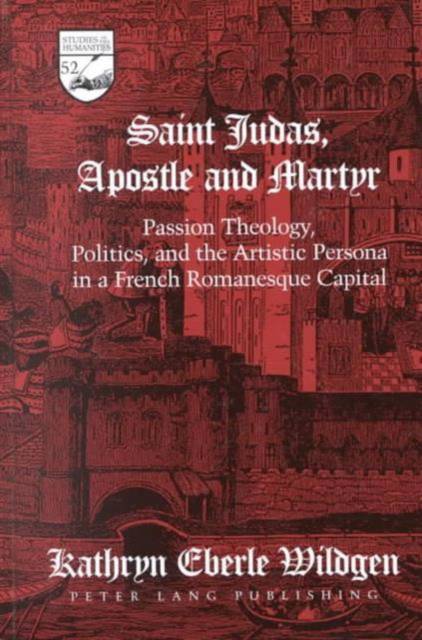
- Afhalen na 1 uur in een winkel met voorraad
- Gratis thuislevering in België vanaf € 30
- Ruim aanbod met 7 miljoen producten
- Afhalen na 1 uur in een winkel met voorraad
- Gratis thuislevering in België vanaf € 30
- Ruim aanbod met 7 miljoen producten
Zoeken
Saint Judas, Apostle and Martyr
Passion Theology, Politics, and the Artistic Persona in a French Romanesque Capital
Kathryn Eberle Wildgen
€ 133,95
+ 267 punten
Omschrijving
Between 1125 and 1135, it is generally agreed, a sculptor of genius usually referred to as Gislebertus carved a tympanum and a series of capitals for the cathedral dedicated to Saint Lazarus at Autun. The capital depicting the suicide of Judas is unique in the Romanesque repertoire both for its beauty of technique and for its execution of subject matter. The iconography is at once baffling and rich in possibilities of interpretation, which extend far beyond a simple image of a hanged man. One of the possibilities explored is that this is an image of a man realizing in extremis that he could and should have been remembered throughout history as Saint Judas, Apostle and Martyr, rather than as the paradigmatic traitor. There are objects in the image that demand - and receive - explanations, albeit tentative: the protuberance on Judas' back; the strap from which he is hanging; the position of his hands and feet. The interpretation is set firmly in its historical period, but the image is also discussed as an object whose significance transcends the time and the place in which it was conceived and produced.
Specificaties
Betrokkenen
- Auteur(s):
- Uitgeverij:
Inhoud
- Aantal bladzijden:
- 188
- Taal:
- Engels
- Reeks:
- Reeksnummer:
- nr. 52
Eigenschappen
- Productcode (EAN):
- 9780820448749
- Verschijningsdatum:
- 22/05/2000
- Uitvoering:
- Hardcover
- Formaat:
- Genaaid
- Afmetingen:
- 152 mm x 229 mm
- Gewicht:
- 444 g

Alleen bij Standaard Boekhandel
+ 267 punten op je klantenkaart van Standaard Boekhandel
Beoordelingen
We publiceren alleen reviews die voldoen aan de voorwaarden voor reviews. Bekijk onze voorwaarden voor reviews.








